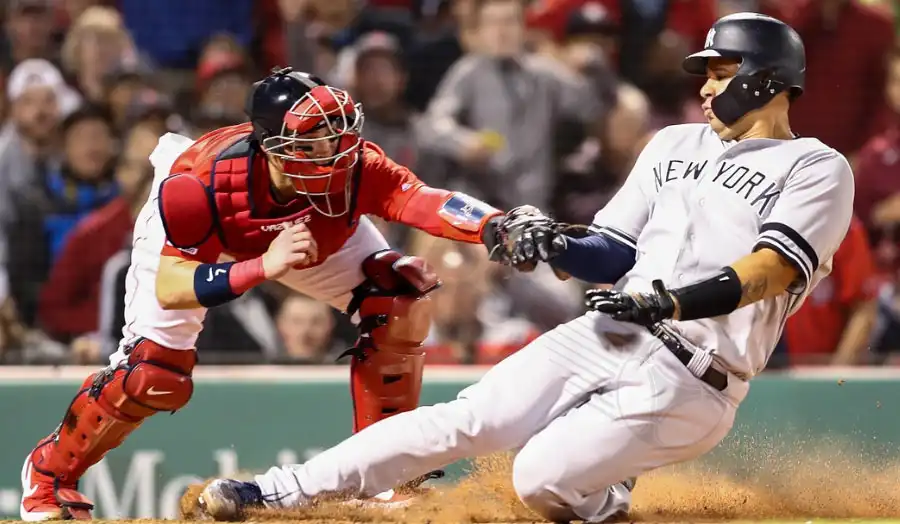Baseball betting is one of the most exciting and strategic ways to wager on sports. While the money line remains the most common bet in Major League Baseball (MLB), run line betting has become increasingly popular among experienced bettors. Understanding how to bet on the MLB run line effectively can give you a significant edge and improve your chances of making profitable wagers. Win Betting Tips will explain everything you need to know about run line betting.
What is an MLB run line betting?
The MLB run line is baseball’s equivalent of a point spread in sports like football and basketball. Instead of betting on a team to win outright (moneyline), you are betting on them to win or lose by a set number of runs.

In almost all MLB games, the run line is set at 1.5 runs:
- The favorite is assigned a -1.5 run line, meaning they must win by at least two runs to cover the spread.
- The underdog is assigned a +1.5 run line, meaning they must either win outright or lose by no more than one run for the bet to be successful.
Understanding run line betting odds (Juice & Vig) in baseball
When betting on the MLB run line, it's crucial to understand how odds, vig (also called juice), and implied probability impact your potential payouts. Unlike moneyline bets, where you simply pick the winner, run line betting introduces a spread that can significantly affect risk and reward.
How run line odds work
Run line odds are typically displayed as -1.5 for the favorite and +1.5 for the underdog. Here’s how this works using a Yankees vs. Red Sox example:
- Yankees (-1.5) at +140 → If you bet $100 and the Yankees win by two or more runs, you win $140.
- Red Sox (+1.5) at -150 → To win $100, you must bet $150, and the Red Sox must either win outright or lose by only one run.

The higher payout for the favorite (-1.5) reflects the added difficulty of winning by multiple runs, while betting on the underdog (+1.5) provides a safety net but at a lower return.
The role of vig (Juice) in run line betting
The vig is the sportsbook’s built-in commission, ensuring they profit regardless of the outcome. The vig on run line bets can vary based on team strength, public betting trends, and matchup factors.
For example:
- A heavily favored team’s -1.5 run line may be priced at -120, meaning you need to bet $120 to win $100.
- An underdog’s +1.5 run line might be -140, requiring a $140 bet to win $100.
Understanding vig and implied probability is key to identifying value bets. If the implied probability of a bet is lower than your assessed probability of winning, it could indicate a profitable wager.
Key takeaways for run line betting
- Favorites (-1.5) offer higher payouts but are more complicated to hit.
- Underdogs (+1.5) provide more security but lower returns.
- The vig (juice) influences your true winnings and should be factored into your betting strategy.
- Analyzing the implied probability of a bet can help you find value.

By understanding these aspects, you can make more informed decisions when betting on MLB run lines.
Why bet on the MLB run line instead of the money line?
Betting on the MLB run line can offer advantages over the money line, especially when dealing with games that have heavy favorites or closely matched teams. Unlike moneyline betting, where you simply pick a team to win outright, run line betting introduces a point spread, typically set at -1.5 runs for the favorite and +1.5 runs for the underdog. This slight adjustment creates opportunities for better payouts and smarter betting strategies.
Better payouts for betting on big favorites
One of the main reasons bettors prefer the run line is the potential for better payouts when betting on strong favorites. In money line betting, a team that is heavily favored- like the Los Angeles Dodgers facing a weaker opponent- might have odds of -250 or worse. This means you would need to wager $250 just to win $100, which can be a significant risk for relatively small returns.
To watch the best matches and engage in thrilling betting, check out bookmaker betting.

Instead, by choosing the -1.5 run line, the odds might improve to +120 or +130, meaning a $100 bet could return $120 or more. Of course, this comes with the additional requirement that the favored team must win by at least two runs, but for teams that consistently dominate their opponents, this is often a risk worth taking.
More value in close games
On the other hand, the run line can also be an effective strategy when betting on underdogs in close games. If you anticipate a low-scoring game- perhaps due to an elite pitching matchup or unfavorable weather conditions- taking the +1.5 run line on the underdog can provide a layer of security. Even if the underdog loses the game outright, they only need to stay within one run for your bet to cash. This is especially useful in games where the moneyline odds don’t offer enough value on the underdog, but the run line gives them a reasonable chance to cover the spread.
Alternative betting strategy for experienced bettors
Additionally, run line betting allows more experienced bettors to find value in market inefficiencies. Oddsmakers typically set lines based on public perception, and money line bets are often inflated due to the popularity of heavy favorites. Savvy bettors who analyze advanced statistics, team form, and situational factors can often exploit discrepancies between the money line and run line odds. For example, if a team frequently wins by multiple runs against weaker competition, consistently betting their -1.5 run line at plus money can be more profitable over the long term than taking them at a steep moneyline price.

Overall, the run line offers more strategic flexibility than the money line, allowing bettors to balance risk and reward while capitalizing on favorable odds. Whether you're looking for better payouts on strong teams, a safer bet on underdogs, or a way to take advantage of mispriced odds, the run line can be a valuable tool in your MLB betting arsenal.
Advanced strategies for MLB run line betting
To make consistent profits from run line betting, you need a strategy. Below are some key tactics used by expert bettors:
Analyze a team’s run line performance
Betting on the MLB run line requires more than just picking a favorite or underdog- it demands a strategic approach that goes beyond basic analysis. While casual bettors might focus on win-loss records, expert bettors know that teams can win frequently without consistently covering the -1.5 spread. Likewise, some underdogs lose often but tend to keep games close, making them valuable +1.5 bets. A deeper dive into run line trends rather than just straight-up results is essential to identifying profitable opportunities.
Consider home vs. away trends
One of the most overlooked factors in run line betting is the difference between home and away teams. Home favorites often struggle to cover -1.5, mainly because they don’t get to bat in the bottom of the ninth inning if they are already leading. This means they have one less opportunity to extend their lead, which can make winning by two runs or more harder.

On the other hand, road favorites play a full nine innings, maximizing their scoring chances and increasing the likelihood of covering the -1.5 spread. Understanding this nuance can provide a significant edge over the average bettor who only looks at team strength.
Research pitching matchups
Another key element to consider is pitching matchups. A dominant starting pitcher, especially one who frequently goes deep into games, gives a favorite a better chance of covering the -1.5 spread. Conversely, a weak bullpen can be a major red flag for run line bettors. Even if a team’s starter dominates for six or seven innings, a shaky relief staff can allow late runs, potentially ruining a -1.5 bet. When betting on underdogs, a strong bullpen can help a +1.5 team stay within one run, making them a valuable selection.
Weather & Ballpark factors
Beyond pitching, weather and ballpark factors can dramatically impact the run-scoring environment. In stadiums where the wind is blowing in, scoring tends to be lower, which benefits +1.5 underdog bets, as games are more likely to be low-scoring and tightly contested.

Conversely, when the wind is blowing out, home runs become more common, favoring -1.5 favorites, as high-scoring games increase the chances of a team winning by multiple runs. Additionally, stadium dimensions matter- ballparks like Coors Field (Colorado Rockies) tend to see higher-scoring games, which can favor run line bets on favorites.
Shop for the best run line odds
Finally, expert bettors always shop for the best odds before placing a bet. Different sportsbooks can offer slightly different lines and even small variations in odds can significantly impact long-term profitability. For instance, if one book offers a Yankees -1.5 at +120 while another offers +130, consistently taking the better odds over time leads to higher returns. Using multiple sportsbooks ensures that you’re always getting the best possible value on every run line bet.
To wrap it up
Run line betting is an exciting alternative to money line betting, offering better payouts for favorites and a safety net for underdogs. However, it requires research, strategy, and discipline. By analyzing teams, pitchers, and odds, you can develop a winning MLB run line betting strategy and improve your overall profits. Now that you have a deep understanding of run line betting, are you ready to put your knowledge to the test?
Read more: Box exacta bet horse racing explained: A beginner’s guide.







